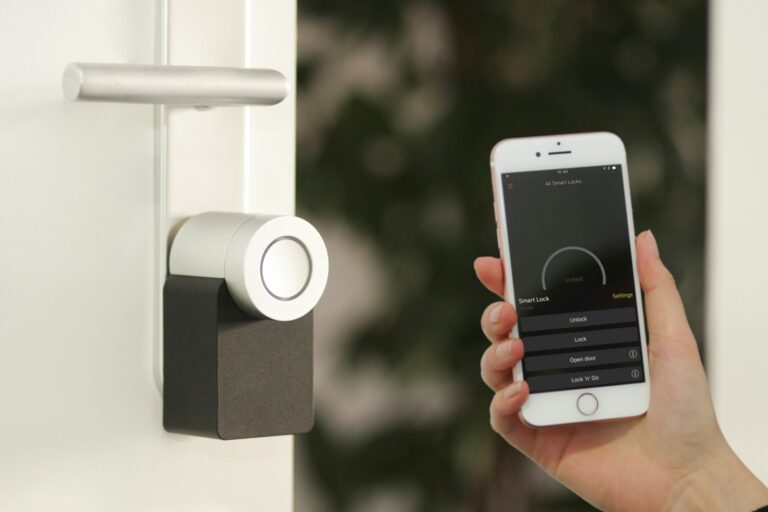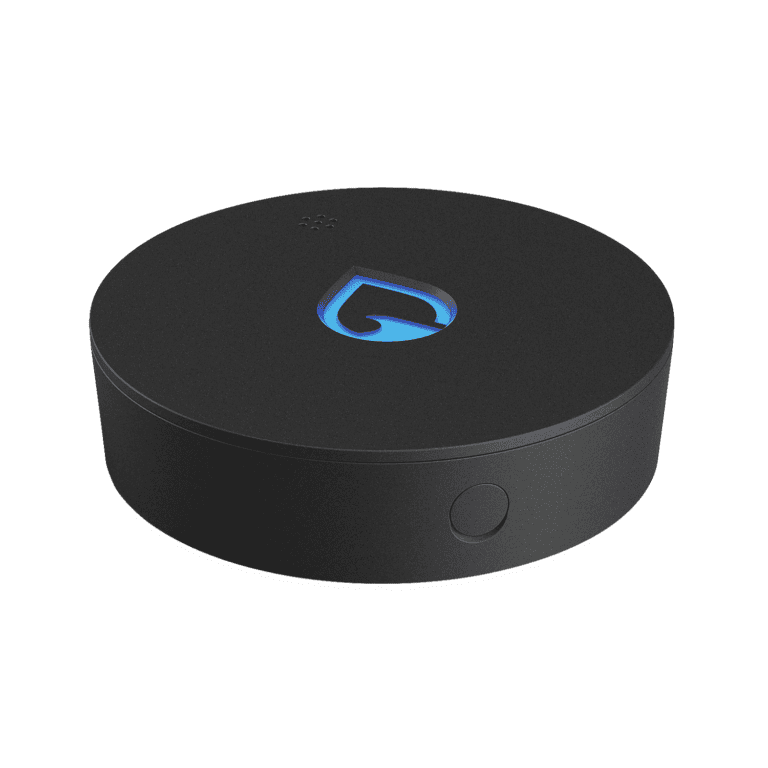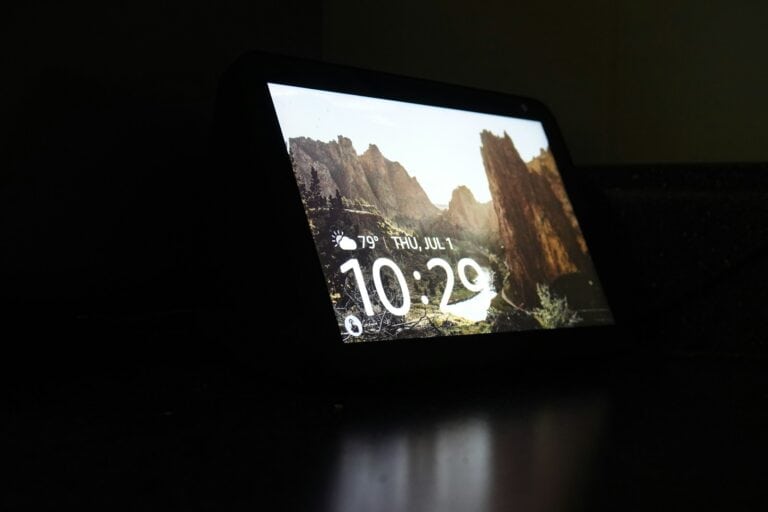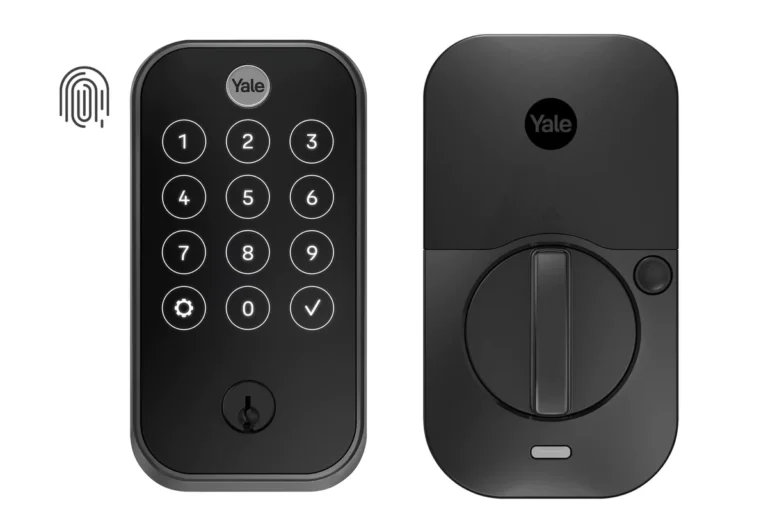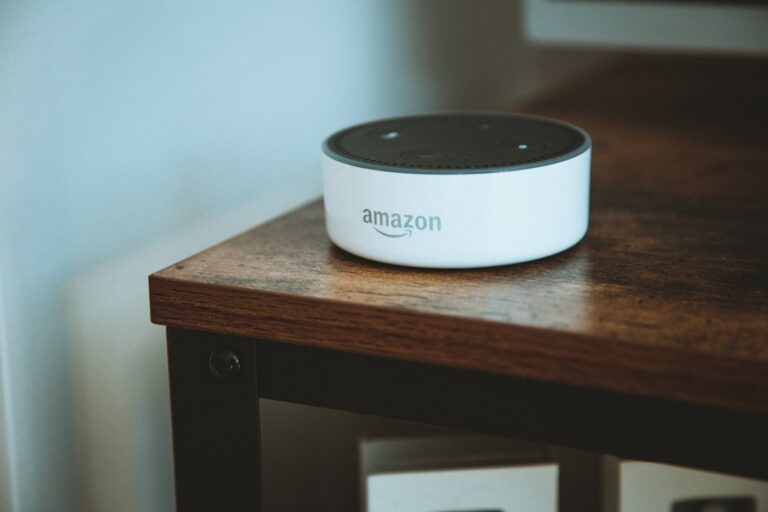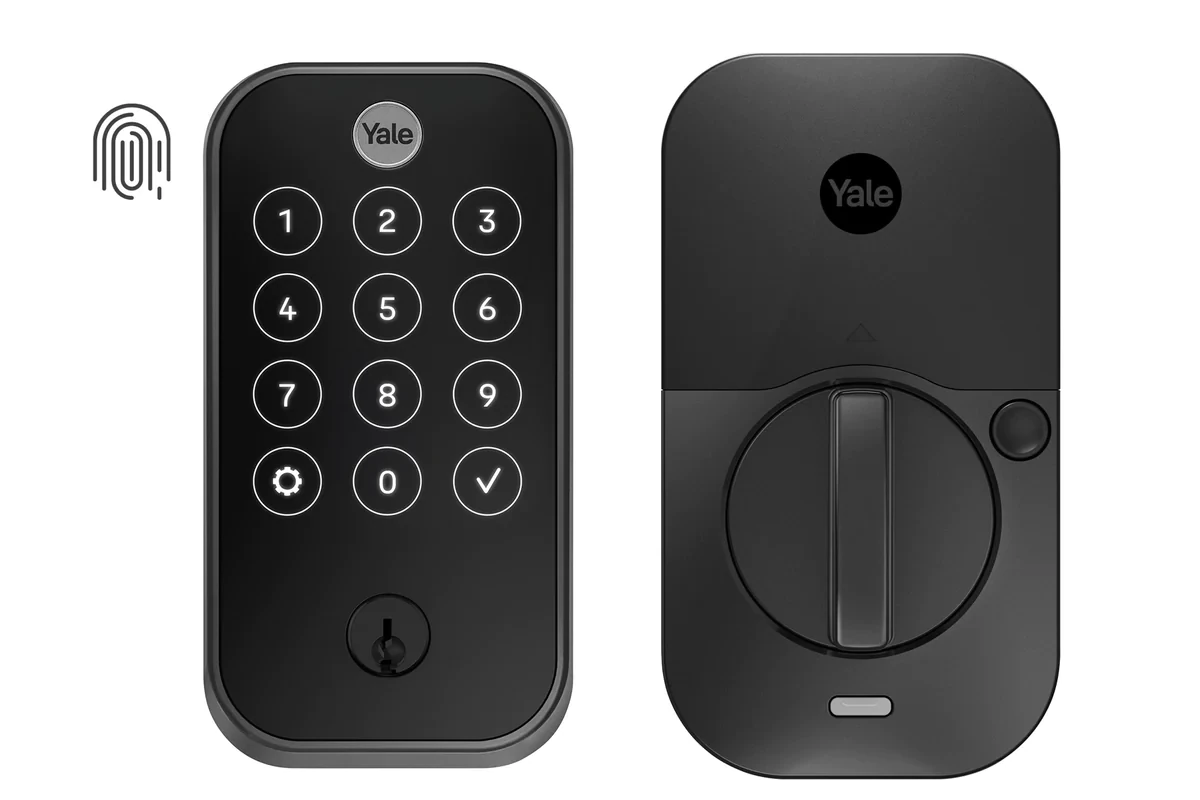
Leaving your home unattended can be stressful, especially during vacations or extended work trips. Modern technology offers a solution with smart devices that let you monitor and protect your property from anywhere. Smart devices can help secure your home through automated systems that alert homeowners to potential problems and allow remote control of essential security features.
These connected gadgets go beyond basic security alarms. With motion-activated security lights, leak protection devices, and smart door locks, homeowners can create a comprehensive protection system. Many of these devices can be accessed and controlled through smartphones, providing peace of mind whether you’re across town or across the country.
The best part is that creating a smart home security system doesn’t require expensive professional installation. Many DIY home security systems allow users to secure and monitor their homes without spending a fortune or committing to lengthy contracts. With the right combination of devices and a reliable control hub, anyone can build an effective remote home protection system.
1. Smart Security Cameras
- What they do: Provide live video feeds, motion alerts, and cloud storage.
- Best features to look for:
- 2-way audio (to speak to visitors or scare off intruders)
- Night vision
- Motion detection with AI (to reduce false alerts)
- Cloud + local storage options
- Examples: Ring, Arlo, Google Nest Cam.
2. Smart Doorbell Cameras
- What they do: Let you see and talk to anyone at your door in real time.
- Why they’re useful: Package theft prevention, visitor monitoring, and deterrence (many burglars check doors first).
- Examples: Ring Video Doorbell, Eufy Security Doorbell.
3. Smart Locks
- What they do: Allow you to lock/unlock doors remotely or set up temporary digital keys for guests.
- Features to consider:
- Auto-lock when you leave
- Access logs (see who entered and when)
- Integration with Alexa, Google Home, or Apple HomeKit
- Examples: August Smart Lock, Yale Assure, Schlage Encode.
4. Smart Lighting Systems
- What they do: Automate lights to mimic your presence while you’re away.
- Security benefits:
- Randomize schedules to deter burglars
- Motion-triggered outdoor lights
- Examples: Philips Hue, LIFX, Kasa Smart Plugs.
5. Smart Sensors (Motion, Door, and Window)
- What they do: Detect movement or entry and send instant alerts.
- Extra features: Some integrate with alarms or trigger lights/cameras when activated.
- Examples: Aqara, Wyze Sense, Ring Alarm sensors.
6. Smart Alarms & Sirens
- What they do: Trigger loud alarms remotely or automatically when sensors detect activity.
- Why they matter: Audible alarms scare off intruders before they cause damage.
- Examples: Ring Alarm, SimpliSafe, Abode.
7. Smart Plugs & Outlets
- What they do: Let you turn appliances (like TVs or radios) on/off remotely.
- How this helps: Creates the illusion of someone being home.
- Examples: TP-Link Kasa, Wemo Smart Plug.
8. Smart Smoke, CO, and Water Leak Detectors
- What they do: Send alerts to your phone if there’s smoke, carbon monoxide, or water damage.
- Why they’re important: Protects your home from non-crime emergencies while away.
- Examples: Nest Protect, Honeywell Home detectors.
9. Smart Hubs & Security Systems
- What they do: Centralize control of all your devices into one app or dashboard.
- Examples: Samsung SmartThings, Amazon Alexa, Google Home, Apple HomeKit.
🔒 Extra Security Tips
- Use strong, unique passwords for every device and enable two-factor authentication (source: PCMag).
- Keep firmware updated to patch security vulnerabilities (source: Tom’s Guide).
- Set up a guest Wi-Fi network for your smart devices to reduce hacking risks (source: McAfee).
✅ Bottom line: A combination of smart cameras, locks, sensors, and lighting—backed by strong cybersecurity practices—can give you peace of mind and real-time control over your home while you’re away.
Key Takeaways
- Smart home security systems allow remote monitoring and control through smartphone apps for protection while away.
- Connected devices like cameras, door locks, and leak detectors provide comprehensive protection against various threats.
- Central management hubs enhance smart device integration for more effective and convenient home security automation.
Understanding Smart Home Technology
Smart home technology has revolutionized how we protect our living spaces. These interconnected devices work together to create a secure environment that can be controlled remotely through smartphones or voice commands.
What Are Smart Devices?
Smart devices are everyday objects enhanced with internet connectivity and sensors that allow them to be monitored and controlled remotely. These gadgets form the backbone of a smart home system and range from simple to complex.
Common examples include:
- Security cameras that provide live video feeds
- Smart locks that allow keyless entry
- Motion sensors that detect unusual activity
- Smart lights that can be programmed to simulate occupancy
These devices typically connect to a central hub or directly to a home network. They can be controlled through dedicated apps or voice assistants like Alexa, Google Assistant, or through platforms such as Apple HomeKit and Amazon Echo.
The primary benefit of smart devices is their ability to provide homeowners with real-time information and control regardless of their physical location.
The Ecosystem of Smart Homes
A smart home ecosystem refers to how various devices work together to create an integrated experience. This network typically consists of three main components:
- Devices – The physical hardware (cameras, locks, thermostats)
- Hub/Controller – Central system that manages device connections
- User Interface – Apps or voice controls for human interaction
The ecosystem’s strength comes from device interconnectivity. For example, a motion sensor can trigger security cameras to record and smart lights to activate simultaneously.
Different manufacturers create their own ecosystems, with major players being Amazon (Alexa), Google (Google Assistant), and Apple (HomeKit). Each offers distinct advantages in terms of device compatibility, user experience, and security features.
Communication Protocols and Compatibility Issues
Smart home devices communicate using various wireless protocols, each with unique characteristics:
| Protocol | Range | Power Usage | Reliability | Common Devices |
|---|---|---|---|---|
| Wi-Fi | Long | High | Good | Cameras, displays |
| Zigbee | Medium | Very low | Excellent | Sensors, switches |
| Z-Wave | Medium | Low | Excellent | Locks, sensors |
| Bluetooth | Short | Low | Moderate | Speakers, trackers |
Using Z-Wave and Zigbee devices can improve security as they’re less vulnerable to internet-based attacks compared to Wi-Fi devices.
Compatibility issues arise when devices use different protocols. This can lead to multiple apps or the need for separate hubs. To minimize these problems, homeowners should:
- Research device compatibility before purchasing
- Consider using a universal hub that supports multiple protocols
- Look for devices that work with established standards
Core Devices for Remote Home Protection
Protecting your home while away requires reliable smart technology that provides real-time monitoring and control. The right combination of devices creates a comprehensive security network that deters intruders and gives you peace of mind.
Smart Locks and Smart Garage Door Openers
Smart locks have revolutionized home entry security by eliminating the need for physical keys. These devices allow homeowners to lock or unlock doors remotely using a smartphone app. Many models offer temporary access codes for visitors or service workers.
Smart locks from brands like August and Yale provide activity logs so you can track who enters your home and when. Some advanced models integrate with voice assistants for hands-free operation.
For garage protection, smart garage door openers alert homeowners when the door is left open accidentally. These devices enable remote checking and operation of garage doors from anywhere in the world.
Most systems send notifications if someone attempts to force entry, adding an extra layer of security. Integration with other smart home devices allows for automated routines, such as lights turning on when the door unlocks.
Security Cameras and Video Doorbells
Security cameras provide eyes on your property when you’re away. Modern cameras offer HD or 4K resolution, night vision, and motion detection with smartphone alerts.
Indoor cameras monitor activity inside the home, while outdoor models withstand weather elements. Many security systems include cloud storage options for footage, though some require subscription plans.
Video doorbells from Ring and Google Nest combine doorbell functionality with security cameras. These devices alert homeowners when someone approaches the door and allow two-way communication.
The ability to speak with visitors remotely deters potential intruders by creating the impression someone is home. Most video doorbells capture and store footage when motion is detected, providing valuable evidence if needed.
Motion Sensors and Security Systems
Motion sensors form the backbone of effective home security by detecting unexpected movement. These devices can trigger alarms, activate cameras, or send immediate smartphone notifications.
Strategic placement in entry points and high-traffic areas maximizes coverage. Many sensors distinguish between pets and people to reduce false alarms.
Complete home security systems like SimpliSafe and ADT integrate multiple components for comprehensive protection. These systems often include professional monitoring services that contact authorities during emergencies.
Setting up a VPN on your home network adds another security layer, allowing safer remote access to your devices. Companies like Vivint and Cove offer user-friendly interfaces that make managing your security system intuitive.
Some advanced systems use AI to learn household patterns and alert you to unusual activities. This smart technology reduces false alarms while ensuring genuine threats receive immediate attention.
Automating Home Security
Technology now makes it possible to create advanced security systems that work automatically. These systems can detect threats and respond without you needing to do anything.
IFTTT and Home Security Automation
IFTTT (If This, Then That) serves as a powerful tool for connecting various smart devices in your home security system. This free service allows you to create simple conditional statements called “applets” that trigger actions between your devices.
For example, you can set up an applet that turns on all your smart lights if your security camera detects motion after dark. Another useful automation might trigger your smart speakers to play loud sounds when a door sensor activates while you’re away.
The beauty of IFTTT lies in its flexibility. Users can connect motion sensors, door/window sensors, cameras, and even doorbell cameras into coordinated responses. When traveling, these automations continue working independently, creating a more robust security system.
Customizing Security Scenarios
Creating personalized security scenarios enhances protection based on specific needs. Many home automation systems allow users to develop “scenes” or “routines” that activate multiple devices simultaneously.
A “Vacation Mode” scene might randomly turn lights on and off throughout different rooms, simulating occupancy while you’re gone. This can be scheduled to activate only during evening hours when burglaries are more common.
Smart door locks can be programmed to automatically lock at certain times or when specific conditions are met. For instance, the front door can lock itself if left open for more than five minutes.
Water leak detection systems represent another valuable security automation. These devices can shut off your main water supply automatically when leaks are detected, preventing expensive water damage while you’re away.
Enhanced Security Through Smart Detection Devices
Smart detection devices offer more than just protection against intruders. They monitor environmental threats that could damage your home when you’re not there to respond quickly.
Leak Detectors and Air Quality Monitors
Leak protection devices are essential components of a comprehensive home security system. These devices detect water leaks before they cause significant damage to the property. When a leak is detected, the system sends immediate alerts to the homeowner’s smartphone, allowing for quick action.
Modern leak detectors can be placed near:
- Washing machines
- Water heaters
- Under sinks
- Near toilets
Some advanced systems can automatically shut off the main water supply when leaks are detected, preventing potentially catastrophic damage.
Air quality monitors provide another layer of protection by detecting harmful substances in the home environment. These devices measure:
| Air Quality Factors | Potential Dangers |
|---|---|
| Carbon monoxide | Poisonous gas |
| Radon | Cancer risk |
| VOCs | Respiratory issues |
| Particulate matter | Lung damage |
Smart Smoke Detectors
Smart smoke detectors represent a significant advancement over traditional models. These devices not only detect smoke but can distinguish between slow-burning fires and fast-burning ones, adjusting their response accordingly.
When smoke or fire is detected, smart security systems immediately notify homeowners via smartphone apps. This real-time alert system works whether the resident is in another room or another country.
Many smart smoke detectors integrate with other home systems. For example, when smoke is detected, the system can:
- Turn on lights for better visibility
- Unlock doors for easier escape
- Shut off HVAC systems to prevent smoke circulation
Battery monitoring is another valuable feature. Rather than annoying chirps, these devices send notifications when batteries need replacement, ensuring they’re always operational.
Smart Lighting Solutions for Security
Smart lighting offers powerful security benefits for homeowners while they’re away. These systems can create the illusion of occupancy and integrate with broader home security features to deter potential intruders.
Smart Bulbs and Smart Switches
Smart bulbs like Philips Hue provide an easy way to control home lighting remotely. These bulbs connect to home WiFi networks, allowing homeowners to turn lights on and off from anywhere using smartphone apps.
Many smart lighting systems include scheduling features that turn lights on and off at different times to mimic normal household activity. This variation appears more natural than lights that remain on constantly or follow obvious patterns.
Some advanced smart bulbs even offer color-changing capabilities, which can simulate the flickering glow of a television. Motion-activated security lights are particularly effective around entry points, illuminating unexpected movement around doors and windows.
For homes with existing fixtures, smart switches from companies like Lutron offer similar functionality without replacing bulbs. These switches control multiple lights simultaneously and work with traditional bulbs.
Integrating Lighting with Security Systems
Smart lighting becomes more powerful when integrated with broader security systems. When connected to motion sensors or cameras, lights can automatically activate when movement is detected.
This integration creates responsive security that:
- Startles potential intruders
- Improves camera visibility at night
- Alerts homeowners to unusual activity
Many smart home platforms allow for custom “scenes” that trigger multiple actions simultaneously. For example, a “Security” scene might activate exterior lights, lock doors, and arm cameras with one command.
Some systems feature remote access dashboards where homeowners can monitor and control their entire security setup, including lighting, from any location. This provides peace of mind while traveling or during extended absences.
Voice Control and Management
Voice commands provide a hands-free way to manage your home security system from anywhere. Smart speakers serve as central hubs that respond to your voice instructions to lock doors, check cameras, or activate security modes.
Controlling Your Smart Home with Alexa
The Amazon Echo and Echo Dot have revolutionized how homeowners interact with their security systems. These devices listen for wake words and execute commands that protect your property.
Users can create custom security routines through the Alexa app. For example, saying “Alexa, I’m leaving” can trigger multiple actions: locking smart locks, activating motion sensors, and turning lights on random schedules to simulate occupancy.
When away from home, the Alexa app allows homeowners to check security camera feeds and receive notifications. The system can be programmed to send alerts if unusual sounds like breaking glass or alarms are detected.
Many security systems now offer dedicated Alexa skills that expand functionality. These allow for more detailed commands like “Alexa, arm my security system in away mode” or “Alexa, show me the front door camera.”
Google Assistant and Home Security Commands
Google Assistant provides robust integration with home security features that homeowners can access while away. The platform connects with numerous security devices including cameras, motion sensors, and smart locks.
Users can verify their home’s status through simple commands like “Hey Google, is my home secure?” This prompts Google Assistant to check all connected security devices and report back with detailed information.
Remote management is streamlined through Google’s interface. Homeowners can control anything in their house through customized dashboards accessible from smartphones.
Voice verification adds an extra layer of security to Google’s platform. The system can be configured to recognize specific voices, ensuring only authorized users can disarm security systems or unlock doors.
Google Assistant also excels at sending alerts when unexpected events occur. This includes notifications for motion detection, door openings, or temperature changes that might indicate a problem at home.
Smart Environmental Controls
Smart technology allows homeowners to manage their environment even when they’re away. These systems can reduce energy bills while keeping your home comfortable and secure.
Smart Thermostats for Remote Monitoring
Smart thermostats offer excellent control over your home’s climate when you’re not there. They learn your schedule and preferences to optimize heating and cooling automatically.
Devices like ecobee include remote sensors that monitor temperature in different rooms, ensuring balanced comfort throughout your home. Many models also track humidity levels, which helps prevent mold growth during your absence.
Most smart thermostats send alerts about unusual temperature changes that could indicate HVAC problems or power outages. This feature proves invaluable during winter when pipe freezing becomes a concern.
These devices typically connect to weather services to adjust settings based on outside conditions. The energy savings can be substantial—between 10-15% on heating and cooling costs for many users.
Smart Plugs and Energy Management
Smart plugs transform ordinary electronics into remotely controlled devices. They install easily between outlets and device plugs without requiring special wiring.
Users can create automated schedules for lights, fans, and small appliances. This capability not only saves energy but also simulates occupancy while you’re away—a proven deterrent for potential intruders.
Many smart plugs include energy monitoring features that track consumption. This data helps identify energy-wasting devices and optimize usage patterns.
Popular Smart Plug Features:
- Remote on/off control via smartphone
- Customizable schedules and timers
- Voice control compatibility
- Energy usage monitoring
- Away mode for random operation
During extended absences, these devices can power down electronics completely, eliminating vampire power draw from items left in standby mode.
Choosing the Right Smart Home Devices
Selecting appropriate smart devices for home protection requires careful consideration of both technical requirements and practical needs. The right combination of devices creates a comprehensive security system that provides peace of mind while away.
Factors to Consider Before Purchasing
When shopping for smart home security devices, budget is often the first consideration, but it shouldn’t be the only one. The level of protection needed varies based on home size and location. A small apartment might only need a smart camera and door lock, while larger homes may require multiple cameras and sensors.
Battery life is crucial for devices like the Ring Battery Doorbell Plus, which needs to function reliably even during power outages. Look for devices with at least 6-12 months of battery life or solar options.
Consider these key factors:
- Weather resistance (IP65 or higher rating for outdoor devices)
- Video quality (1080p minimum, 2K or 4K preferred)
- Storage options (local vs. cloud, subscription costs)
- Smart alert capabilities (person detection vs. general motion)
- Night vision capabilities
User-friendliness matters too. The best home security cameras have intuitive apps that even tech novices can navigate easily.
Compatibility with Existing Devices and Systems
Smart home devices work best when they communicate with each other. Before purchasing, check if new devices will integrate with your current ecosystem (Google Home, Amazon Alexa, Apple HomeKit).
The TP-Link Tapo C120 camera works across multiple platforms, making it a versatile choice. Similarly, many modern smart lights and locks support multiple protocols.
Consider these compatibility aspects:
- Communication protocols: Wi-Fi, Zigbee, Z-Wave, Thread
- Hub requirements: Some devices need separate hubs
- App consolidation: Prefer devices that work in the same app
Many homeowners find that motion sensors, contact sensors, and smart switches form the backbone of a reliable system. These can trigger other devices automatically—turning on lights when motion is detected or sending alerts when doors open unexpectedly.
For optimal protection, ensure your router provides strong Wi-Fi coverage throughout your property. Mesh Wi-Fi systems help eliminate dead zones that could compromise smart device functionality.
Installation and Setup
Getting your smart home security devices properly installed and configured is crucial for effective home protection while you’re away. Proper setup ensures your devices work correctly and stay secure from potential hackers.
DIY vs Professional Installation
Many modern smart security cameras and devices are designed for simple DIY installation. Companies typically provide step-by-step instructions through their mobile apps, making it accessible for most homeowners.
DIY installation offers significant cost savings compared to professional services. Most devices require basic tools like screwdrivers and drills. Wall-mounted cameras, door sensors, and smart locks generally take 30-60 minutes each to install properly.
For more complex systems involving multiple integrated devices or custom wiring, professional installation might be worthwhile. Best Buy’s Smart Home Services offers expert installation, ensuring optimal placement and functionality of security cameras and other devices.
Professional installers can also help with integrating various brands into a cohesive system. This is particularly valuable for comprehensive setups including water leak detectors, smoke alarms, and security cameras working together.
Setting Up Your Smart Home Network Securely
Network security is essential for protecting smart devices from hackers. Creating a dedicated VLAN (Virtual Local Area Network) specifically for IoT devices adds an important security layer to home security systems.
Strong, unique passwords for each device and regular firmware updates are non-negotiable security practices. Many homeowners overlook this crucial step, leaving their systems vulnerable.
Limiting cloud dependencies where possible enhances privacy and reduces vulnerability to service outages. Local processing options are increasingly available for security cameras and other devices.
Setting up two-factor authentication adds another security layer to remotely controlled smart locks and security systems. This prevents unauthorized access even if passwords are compromised.
Proper firewall configuration is also essential. Only necessary connections between smart devices and your main network should be allowed, blocking potential attack vectors.
Frequently Asked Questions
Smart home technology offers numerous ways to protect your home while you’re away. These solutions range from security cameras and smart locks to innovative uses of everyday devices like smart plugs and comprehensive home automation systems.
What are the best smart home devices to use for home security during long periods of absence?
For extended absences, a comprehensive security system with multiple components works best. Smart security cameras allow homeowners to monitor their property from anywhere using a smartphone app.
Smart locks provide secure access control and can be programmed to allow temporary entry for house sitters or maintenance workers. These devices typically send alerts whenever someone enters the home.
Motion sensors placed at key entry points offer another layer of protection. When triggered, these sensors can activate lights, sound alarms, or send immediate notifications to the homeowner’s phone.
How can smart plugs be utilized to enhance security when no one is home?
Smart plugs connected to lamps can create the illusion of occupancy through programmed lighting schedules. Homeowners can set these devices to turn lights on and off at different times each evening, making the home appear occupied.
These plugs can also power radios or televisions at random intervals. The sound gives potential intruders the impression that someone is home, deterring break-in attempts.
Some advanced smart plugs include energy monitoring features that alert homeowners to unusual power consumption patterns, potentially indicating unauthorized use of appliances.
Which home automation systems are recommended for vacation rental properties to ensure safety and security?
Vacation rental properties benefit from comprehensive systems like Ring or Nest that integrate multiple security features. These platforms offer professional monitoring options along with DIY capabilities suitable for rental management.
Keyless entry systems with temporary access codes provide safer alternatives to physical keys. Property managers can create and delete access codes remotely between guest stays.
Water leak detectors and smart smoke alarms add protection against property damage. These devices send immediate alerts about potential emergencies when the property is vacant between guests.
How can I use the Google Home app to monitor my home remotely?
The Google Home app enables remote control access to connected security devices. Users can view live camera feeds, receive motion alerts, and check the status of door and window sensors.
Voice commands through the app allow users to control security features from afar. This includes turning on lights, locking doors, or activating “away” mode for the entire system.
The app’s history feature maintains a record of all device activations and alerts. This provides a comprehensive security timeline that can be reviewed if concerns arise while away.
What steps should be taken to ensure the secure use of Home Assistant when away?
Securing the Home Assistant platform begins with strong encryption protocols. Users should verify that their system uses AES 128-bit encryption and Transport Layer Security for all communications.
Two-factor authentication should be enabled for all user accounts. This prevents unauthorized access even if login credentials become compromised.
Regular software updates are essential for maintaining security. Homeowners should configure automatic updates or establish a routine for manually updating the system before extended absences.
What features should I look for in SmartThings or similar platforms to safeguard my home while traveling?
Geofencing capabilities automatically adjust security settings based on the homeowner’s location. The system can activate “away” mode when users travel beyond a certain distance from home.
Customizable automation rules enhance security effectiveness. These allow devices to work together, such as having outdoor motion sensors trigger indoor lights or cameras.
Look for platforms offering secure remote access through encrypted connections. This ensures that controlling devices from afar doesn’t create security vulnerabilities in the system.


